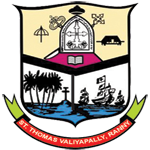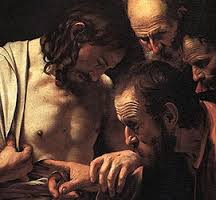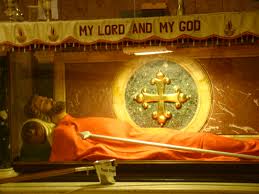
St.Thomas Valiyapally Ranni

St.Thomas Valiyapally Ranni
Our church patron is St. Thomas. St. Thomas was a Jew, called to be one of the twelve Apostles. He was a dedicated but impetuous follower of Christ. When Jesus said He was returning to Judea to visit His sick friend Lazarus, Thomas immediately exhorted the other Apostles to accompany Him on the trip which involved certain danger and possible death because of the mounting hostility of the authorities. At the Last Supper, when Christ told His Apostles that He was going to prepare a place for them to which they also might come because they knew both the place and the way, Thomas pleaded that they did not understand and received the beautiful assurance that Christ is the Way, the Truth, and the Life.
But St. Thomas is best known for his role in verifying the Resurrection of his Master. Thomas' unwillingness to believe that the other Apostles had seen their risen Lord on the first Easter Sunday merited for him the title of "doubting Thomas." Eight days later, on Christ's second apparition, Thomas was gently rebuked for his skepticism and furnished with the evidence he had demanded - seeing in Christ's hands the point of the nails and putting his fingers in the place of the nails and his hand into His side. At this, St. Thomas became convinced of the truth of the Resurrection and exclaimed: "My Lord and My God," thus making a public Profession of Faith in the Divinity of Jesus.

St. Thomas, referred to as Didymus, in the Gospel of St. John is one of twelve disciples of Jesus Christ. He is one of the prime witnesses to the resurrection of Jesus.
St. Thomas the apostle of our lord Jesus Christ arrived in India in the year 52 AD at the then famous port of Craganore at muziris in the Malabar Cost. He founded the seven and the half churches in various places of Kerala viz 1)Kodungallur(Cranganure) ,2)palayur(palur), 3)Kottakavil or Parvur, 4)Gokamangalam,5) chayal(Nilakal) 6)Niranam 7)Kurakeni (Quilon) and Thiruvithancode arapally is the half church. He travelled extensively all over the world over seventeen years. He spent four years in Sind, six years in Malabar and seven years in Mailepuram, or the present Mylapore in Madras.
Legends say that a huge log of wood was washed ashore near what is now called Santhome, which could not be moved even by elephants. St. Thomas used his girdle and pulled it out. The king of Mylapore was so taken up that he donated the huge log of wood to St. Thomas, who built a small chapel with it.
After his death, his body was buried in the Church built by him. A pot containing earth, probably moistured by his blood and the lance with which he was pierced were both buried in his tomb. In the 10th century AD Christians from Persia, founded this Christian Village of Sathome, and then they build a church and tomb over the burial site of St. Thomas.And that in the 3rd century (AD396) his holly remains wave taken to uraha(Edessa) where in the church built in his name they were deposited.The malankara Syrian church commemorate the apostle's "Duokron" on the third July.
The Portuguese whom came to India in 1523AD found a small shrine called "Ben Thuma" that is, the house of Thomas, in the custody of a Muslim. The Portuguese then built a Church and erected the Diocese of Santhome-de-Mellapore. Dom Sebasteao-de-Pedro of the Augustinian Order was the first bishop of the Diocese of Mylapore.
Later a fort was built to protect the Portuguese settlement of Santhome. Over the years it was destroyed by the constant attack of the Dutch and Golcondas. During the time of the Portuguese there were five Roman Catholic Churches, including what is the Shine today.

It was opened for the third time in 1523 by the Portuguese who arrived at Mylapore to rebuild the ruined Church over the tomb of the Apostle, St. Thomas. Don Jose Pinharno, the bishop of Mylapore, opened it for the fourth time 1729 to give pilgrims the earth from the sepulchre. It was at this time a bright light appeared from the tomb.
Today the Shrine preserved a small bone of the Saint and the head of the lance with which the Saint was pierced. In 1954, his Eminence Cardinal Eugene Tasserant brought a piece of bone from the hand with which the Saint touched the side of Jesus after his resurrection, to the Shine.
The tomb of St. Thomas is the very nucleus of the present day Shrine. This makes the soil in which he was martyred sacred and exclusive.